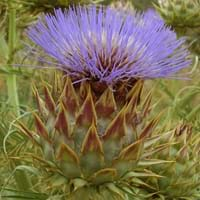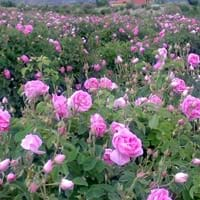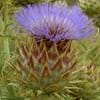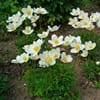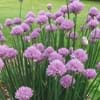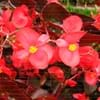Life Span
Perennial
Perennial
Type
Vegetable
Flowering Plants, Ornamental Plants, Perennial
Origin
Mediterranean
Hybrid origin
Types
Green Globe, Imperial Star, Tempo, Violetto, Symphony
Summer Damasks, Autumn Damasks
Habitat
Sandy areas
gardens
USDA Hardiness Zone
7-10
Not Available
AHS Heat Zone
9-1
Not Available
Sunset Zone
8, 9, 14, 15, 16, 17, 18, 19, 20, 21, 22, 23, 24
Not Available
Habit
Rosette/Stemless
Clump-Forming
Flower Color Modifier
Not Available
Bicolor
Fruit Color
Not Available
Non Fruiting Plant
Leaf Color in Spring
Gray Green, Silver
Green, Gray Green
Leaf Color in Summer
Gray Green, Silver
Dark Green, Green
Leaf Color in Fall
Gray Green, Silver
Green, Gray Green
Leaf Color in Winter
Not Available
Dark Green, Green
Leaf Shape
Glandular
Pinnate
Plant Season
Spring
Spring, Summer, Fall
Sunlight
Partial shade
Full Sun, Partial Sun
Type of Soil
Well drained
Loam, Sand
The pH of Soil
Slightly Acidic
Acidic, Neutral
Soil Drainage
Well drained
Well drained
Bloom Time
Early Fall, Fall
Spring, Late Spring, Early Summer, Summer, Late Summer, Early Fall, Fall
Repeat Bloomer
No
Not Available
Tolerances
Drought
Drought
Where to Plant?
Ground
Container, Ground, Pot
How to Plant?
Seedlings, Transplanting
Cuttings
Plant Maintenance
Medium
Medium
Watering Requirements
Form a Soil ring to water efficiently, Needs watering once a week, Water twice a day in the initial period
Average Water Needs
In Summer
Lots of watering
Lots of watering
In Spring
Moderate
Moderate
In Winter
Average Water
Average Water
Soil pH
Slightly Acidic
Acidic, Neutral
Soil Type
Well drained
Loam, Sand
Soil Drainage Capacity
Well drained
Well drained
Sun Exposure
Partial shade
Full Sun, Partial Sun
Pruning
No pruning needed in the early stages, Prune after flowering, Remove deadheads
Remove damaged leaves, Remove dead branches, Remove dead leaves
Fertilizers
All-Purpose Liquid Fertilizer
All-Purpose Liquid Fertilizer
Pests and Diseases
Aphids, Gray mold, Powdery mildew, Root rot
Beetles, Black Spot, Caterpillars, Downy mildew, Mosaic viruses, Powdery mildew, Rust, Scale insects, Thripes
Plant Tolerance
Drought
Drought
Flower Petal Number
Not Available
Double
Edible Fruit
No
Not Available
Fragrant Leaf
Not Available
No
Foliage Texture
Coarse
Medium
Foliage Sheen
Matte
Glossy
Invasive
No
Not Available
Self-Sowing
Yes
Not Available
Attracts
Butterflies
Birds, Butterflies
Allergy
Intestinal gas
Rash
Aesthetic Uses
Not Used For Aesthetic Purpose
Showy Purposes
Beauty Benefits
Not Available
Not Available
Environmental Uses
Air purification
Air purification
Medicinal Uses
Anemia, High cholestrol, Kidney problems, Liver problems
Not Available
Part of Plant Used
Flowers, Fruits
Flowers
Other Uses
Can be made into a herbal tea, Used as primary flavor in Italian Liqours
Oil is used in perfume, soaps, creams, etc.
Used As Indoor Plant
No
Yes
Used As Outdoor Plant
Yes
Yes
Garden Design
Not Available
Container, Cutflower, Feature Plant, Foundation, Mixed Border, Topiary / Bonsai / Espalier
Botanical Name
Cynara cardunculus
Rosa × damascena
Common Name
Artichoke
Damask rose, rose of castile
In Hindi
Artichoke
जामदानी गुलाब
In German
Artischocke
Damaszener-Rosen
In French
Artichaut
Le rosier de Damas
In Spanish
Alcachofa
Rosa de Damasco, Rosa de Castilla
In Greek
αγκινάρα
δαμασκηνό τριαντάφυλλο
In Portuguese
Alcachofra
rosa damascena
In Polish
Karczoch
Róża damasceńska
In Latin
cactus
surrexit Damascum
Phylum
Anthophyta
Magnoliophyta
Class
Eudicotyledones
Magnoliopsida
Family
Asteraceae
Rosaceae
Clade
Not Available
Not Available
Tribe
Cynareae
Not Available
Subfamily
Not Available
Not Available
Number of Species
Not Available
Not Available
Difference Between Artichoke and Damask Rose
If you are confused whether Artichoke or Damask Rose are same, here are some features about those plants to help you choose better. Many people think that these two plants have the same characteristics, but one can see Artichoke and Damask Rose Information and learn more about it. Fertilizers required for proper growth of Artichoke are All-Purpose Liquid Fertilizer, whereas for Damask Rose fertilizers required are All-Purpose Liquid Fertilizer. Hence, one should know the basic difference between Artichoke and Damask Rose if you are planning to have them in your garden to enhance its beauty.
<
Flowering PlantsImportance of Artichoke and Damask Rose
Want to have the most appropriate plant for your garden? You might want to know the importance of Artichoke and Damask Rose. Basically, these two plants vary in many aspects. Compare Artichoke and Damask Rose as they differ in many characteristics such as their life, care, benefits, facts, etc. Every gardener must at least have the slightest clue about the plants he wants to plant in his garden. Compare their benefits, which differ in many ways like facts and uses. The medicinal use of Artichoke is Anemia, High cholestrol, Kidney problems and Liver problems whereas of Damask Rose is Not Available. Artichoke has beauty benefits as follows: Not Available while Damask Rose has beauty benefits as follows: Not Available.
Compare Facts of Artichoke vs Damask Rose
How to choose the best garden plant for your garden depending upon its facts? Here garden plant comparison will help you to solve this query. Compare the facts of Artichoke vs Damask Rose and know which one to choose. As garden plants have benefits and other uses, allergy is also a major drawback of plants for some people. Allergic reactions of Artichoke are Intestinal gas whereas of Damask Rose have Rash respectively. Having a fruit bearing plant in your garden can be a plus point of your garden. Artichoke has no showy fruits and Damask Rose has no showy fruits. Also Artichoke is flowering and Damask Rose is not flowering . You can compare Artichoke and Damask Rose facts and facts of other plants too.
